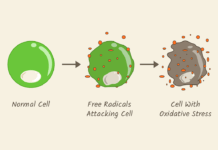Interested in working at an office that utilizes AI? Learn more about opportunities with Heartland Dental, visit https://rdh.tv/heartland
Test Your Knowledge of Artificial Intelligence (AI) in Dentistry
1. Artificial intelligence refers to intelligence demonstrated by machines rather than humans. Augmented intelligence retains elements of human intelligence in its procedures.
According to an American Dental Association (ADA) white paper, artificial intelligence (AI) is defined as “intelligence demonstrated by machines as opposed to intelligence displayed by humans.” Augmented intelligence (AuI) is defined as playing a “similar role to AI except that it keeps human intelligence elements in its procedures.”
In essence, AuI acts as a tool to assist clinicians with different tasks and decision-making rather than completing the task or making the decision for the clinician. Instead of replacing human intelligence, AuI enhances it.
Dentistry - Overview of Artificial and Augmented Intelligence Uses in Dentistry [ADA SCDI White Paper No. 1106]. (2022, December 30). American Dental Association. https://www.ada.org/-/media/project/ada-organization/ada/ada-org/files/resources/practice/dental-standards/ada_1106_2022.pdf
2. Which of the following are potential uses of AI/AuI in radiologic imaging?
The potential uses for AI/AuI in radiologic imaging include, but are not limited to:
- Providing clinical data-driven decision trees to select appropriate imaging examinations
- Identifying radiologic manifestations of disease (i.e., coronal radiolucency, bone loss, apical radiolucency, erosion of mandibular condyle)
- Interpreting radiologic findings (i.e., widened PDLs, calculus detection, carious lesions, marginal discrepancies, TMJ pathology)
- Apply radiologic information to predict therapeutic response and assess prognosis
- Screening for potential disease (i.e., osteoporosis)
- Annotating and/or segmenting anatomic structures (i.e., nerve canals, cephalometric analysis)
- Image enhancement and manipulation (i.e., artifact reduction, low-dose imaging)
- Quality analysis and improvement (i.e., identifying artifacts and technical errors through datasets)
Dentistry - Overview of Artificial and Augmented Intelligence Uses in Dentistry [ADA SCDI White Paper No. 1106]. (2022, December 30). American Dental Association. https://www.ada.org/-/media/project/ada-organization/ada/ada-org/files/resources/practice/dental-standards/ada_1106_2022.pdf
3. AI can identify caries only at their latest stages when they are visible to the naked eye or dental radiographs.
AI-driven technologies are highly effective in identifying dental caries. They can detect dental caries in their initial phases, often before they become apparent to the naked eye or dental radiographs. Early detection is vital, as it allows for prompt intervention and treatment. Early detection and intervention may enhance minimally invasive approaches to treatment and prevent dental caries from advancing into more serious dental issues, ultimately preserving oral health.
Mahesh Batra, A., Reche, A. A New Era of Dental Care: Harnessing Artificial Intelligence for Better Diagnosis and Treatment. Cureus. 2023; 15(11): e49319. https://www.ncbi.nlm.nih.gov/pmc/articles/PMC10748804/
4. AI and AuI bring value to clinical dental care by improving the accuracy of diagnosis, enhancing clinical decision-making, and predicting the treatment prognosis, which can help clinicians render the best quality care to their patients.
Studies show that AI/AuI performs well in multiple areas of dentistry, including periodontics, endodontics, imaging analysis, and TMJ disorders, among others. Some studies indicate this technology is more accurate than dental specialists. Therefore, the evidence supports that AI/AuI can bring value to clinical patient care through the accuracy of diagnosis, enhancing clinical decision-making, and predicting the treatment prognosis.
Khanagar, S.B., Al-Ehaideb, A., Maganur, P.C., et al. Developments, Application, and Performance of Artificial Intelligence in Dentistry - A Systematic Review. J Dent Sci. 2021; 16(1): 508-522. https://www.ncbi.nlm.nih.gov/pmc/articles/pmid/33384840/
5. On average, what percentage of dental offices currently use AI technology?
A joint survey conducted by the American Dental Hygienists’ Association and Heartland Dental shows that only 8% of dental practices currently use AI, even though substantial evidence supports the use of AI and AuI in dental practices.1,2
Most hygienists surveyed noted they had little familiarity with dental AI technology. Half the dental hygienists surveyed admitted that their practice was unprepared to adopt AI.1
However, a majority of respondents believe that AI would improve efficiency, clinical effectiveness, or both. Of those surveyed, 80.4% expressed no worry about AI replacing dental hygienist but instead saw it as a tool to enhance their capabilities.1
Survey respondents who have utilized dental AI technology indicated they used it primarily to diagnose dental disease. Other uses included educating patients, getting a second opinion, preparing charts, submitting supporting information for insurance claims, and summarizing patient notes.1
1. AI in Dentistry: Are Hygienists Ready? (2024, April). American Dental Hygienists’ Association. https://www.adha.org/wp-content/uploads/2024/04/2024_Heartland-ADHA_2024_Hygienist_Dental_AI_Survey.pdf
2. Khanagar, S.B., Al-Ehaideb, A., Maganur, P.C., et al. Developments, Application, and Performance of Artificial Intelligence in Dentistry - A Systematic Review. J Dent Sci. 2021; 16(1): 508-522. https://www.ncbi.nlm.nih.gov/pmc/articles/pmid/33384840/
6. Training is important when considering using AI/AuI. If a dental professional does not have sufficient understanding of the AI tool being used, they must become educated or refer the patient to another dental professional who has the proper knowledge to use the tool.
Under the principle of nonmaleficence and beneficence, dental professionals are required to keep their knowledge and skills current. This includes the use of tools such as AI/AuI. If a dental professional does not have sufficient understanding of the AI tool being used, they must become educated or refer the patient to another dental professional who has the proper knowledge to use the tool.
McCarthy, M., Elster, N., Williams, E. (n.d.) The Ethics of Augmented Intelligence in Dentistry: Making the Patient the Priority. JADA+. https://436395.hs-sites.com/jadaplusai/the-ethics-of-augmented-intelligence-in-dentistry-making-the-patient-the-priority
7. Which of the following can AI do to help achieve equity in oral health?
Assessing salivary biomarkers offers a noninvasive method for the early diagnosis of diseases and for monitoring therapeutic responses. When combined with radiographic and biomarker data along with clinical and socioeconomic information, dentistry becomes an ideal field for advanced analytics, including multimodal AI.
AI-driven technologies can pinpoint high-risk groups to prevent the onset and progression of dental conditions, such as periodontal disease and the resulting tooth loss. They also aid in promoting behavioral changes, fostering a shift toward preventive measures and minimally invasive treatments.
AI can empower mid-level clinicians, such as dental therapists, by analyzing imaging and clinical data to support decision-making.
Elani, H.W., Giannobile, W.V. Harnessing Artificial Intelligence to Address Oral Health Disparities. JAMA Health Forum. 2024; 5(4): e240642. https://jamanetwork.com/journals/jama-health-forum/fullarticle/2817745












